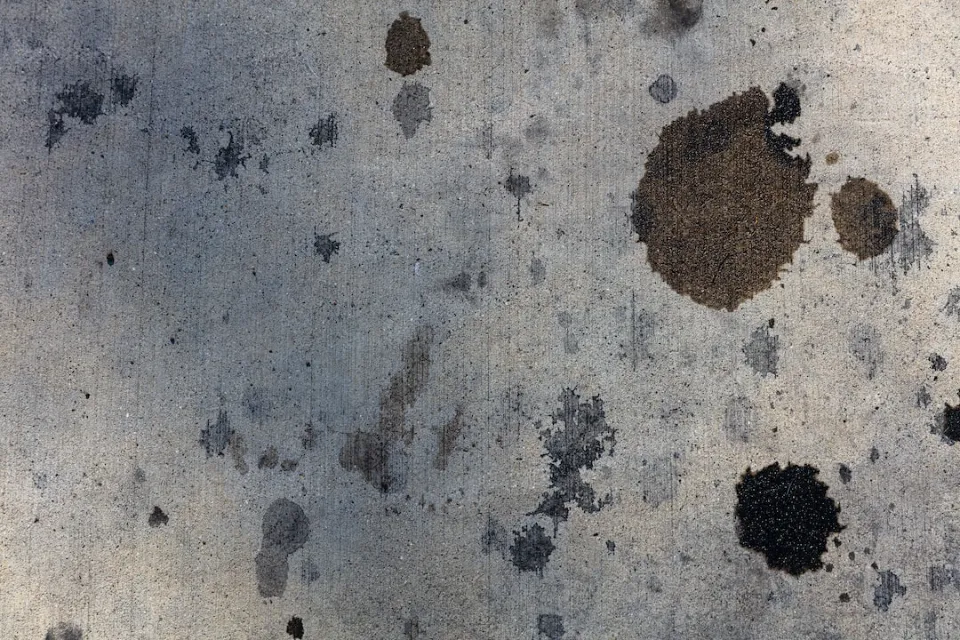
How long does it take for mold to grow? Mold starts to grow within 24 to 48 hours, according to FEMA’s general rule of thumb.
Everywhere in nature, mold spores—small invisible airborne particles—exist, and after a water damage incident, they can develop into visible mold. Mold can endanger the health of the people who live in your home when it begins to spread.
If you take quick action, you can stop the growth of mold in your house. To prevent mold from growing, all that needs to be done is to remove the moisture.
Table of Contents
What Causes Mold Growth?
In the wake of water damage, mold growth is a common occurrence.
A moisture source and an organic food source are the two things that mold spores require to grow, but the moisture source is the one that is most crucial. As a result, mold growth frequently happens after water damage. The excess water provides the mold spores with the moisture they require to flourish, and this moisture is frequently present in building materials.
Mold feeds on cellulose, which is found in wood, drywall, insulation, and other typical building materials. Since it is easy to find these materials in residences and commercial buildings, mold only needs moisture to begin growing. When the mold comes into contact with too much moisture and has enough time to develop, it will.
How Long Does It Take for Mold Grow?
According to FEMA, mold starts to grow within 24 to 48 hours as a general rule to mold growing.
However, this does not imply that you will see it right away. The microscopic mold spores that are currently just beginning to germinate are not visible to the naked eye. In actuality, the majority of mold symptoms typically begin to show 18 to 21 days later.
This is one of the factors that make mold such a hassle for building owners and homeowners. The work needed to remediate can be expensive and time-consuming by the time mold growth reaches this stage.
You might be able to take preventive action to find and get rid of mold earlier if you are aware of the life cycle of household mold and how long it takes to grow.
Mold Spores Germinate After 24 to 48 Hours
Even inside your home, a negligible amount of dormant mold spores are typically present in the air. These microscopic mold spores are harmless and are not visible to the naked eye in their dormant state.
But in the presence of moisture, spores begin to germinate — in other words, they activate and start mold grow.
Mold spores are similar to little seeds. They will become seedlings if you water them. Germination is what happens in the first two days after water damage to mold spores, and it usually takes place during this time.
The affected surfaces can be cleaned with a diluted bleach solution to get rid of the newly germinated mold spores and stop further growth after the water-damaged area has been thoroughly dried.
Small enough to be invisible, germinating mold spores are simple to overlook during cleanup and repair. It’s crucial to be as thorough as you can in the first 24 to 48 hours following a leak or flood because of this.
Hyphae Start Growing After 3 to 12 Days
After mold spores have germinated, they begin to mold grow hyphae — thin cellular strands that look like roots. Each strand only grows at a rate of 1.5 mm per day and has a diameter of only 3 to 6 µm (or 0.0003 to 0.0006 cm).
To enter porous organic materials like drywall, wood, ceiling tiles, insulation, and carpets, hyphae force their way out of the spore. In addition to decomposing and absorbing nutrients from the environment to feed the mold, they also release volatile organic compounds (VOCs) into the atmosphere.
Depending on the type of mold and the circumstances of the room (for example, humidity levels, temperature, etc.), this process can start in as little as 3 days or take as long as 12. amount of moisture, ambient temperature, and surface material).
The newly mold grow developed hyphae are currently still too small to see.
Once hyphae have “rooted” themselves in, they can no longer be easily removed from surfaces by cleaning them with diluted bleach or other surface disinfectants. The hyphae beneath the surface of the mold may not be killed by common household bleach and disinfectant solutions, allowing it to reappear.
For nonporous surfaces (drywall, wood, etc.) at this point, more potent mold cleaning products may be necessary.) that were not thoroughly cleaned within the first 24 to 48 hours. To aid in dislodging embedded hyphae, these products frequently combine active ingredients like hypochlorite or hydrogen peroxide with a surfactant.
Mycelia Becomes Visible After 18 to 21 Days
As hyphae grow in numbers, they form a mass of interconnected strands called mycelium — this is the fuzzy or slimy patch that you now see mold grow on your wall or ceiling.
Only after the mycelium has developed, which typically takes between 18 and 21 days, is mold visible. Again, this can change depending on the species and circumstances.
At the tips of hypha cells, fresh spores are created and released into the atmosphere. Aside from aggravating allergy and asthma symptoms, high concentrations of spores and VOCs produced as a byproduct of metabolism can also lead to headaches, respiratory issues, and eye irritation.
Mold can already significantly harm the materials it grows on if it is not treated right away. It will also be easier to detect the rotting, musty, or earthy smell.
All contaminated materials must be taken out once mycelia have formed and mold is apparent. After drying and disinfecting, materials that are hard and non-porous, such as steel and rigid insulation, can be reinstalled. However, once mold growth has manifested, porous materials like drywall, ceiling tile, wood, cardboard, and upholstery must be thrown away.
Always wear gloves, an N-95 respirator, and goggles when removing or cleaning the visible mold. To stop spores from spreading, make sure the area is well-ventilated and clean up any dust or other debris with a HEPA vacuum.
Exercise caution when performing repairs or cleaning because doing so could lead to the spread of mold spores, debris, and VOCs. You should hire a qualified professional to handle the remediation if the moldy area is larger than 10 square feet overall.

How Does Mold Cause Damage?
When mold grows on a surface, it feeds on the components of the surface. Its structure is harmed as a result of eating away at the organic materials. The more harm the mold will do, the longer it is permitted to eat away at the material. Eventually, if the mold is not treated, the surface’s structural integrity will be compromised, rendering it useless and irreparable.
Anyone who has been exposed to mold may develop allergies, which can cause coughing, wheezing, and skin and eye irritation. The effects of prolonged exposure will worsen.
How Can I Stop Mold from Growing?
Controlling moisture is essential for preventing mold growth. To control the amount of moisture present, you must act quickly if your property has water damage. As a result of how quickly water can spread, this is particularly crucial. When there is no more moisture to absorb, whatever furnishings and building materials have absorbed moisture will continue to do so, allowing the moisture to penetrate deeper and farther.
Since mold can start to grow as soon as 24 hours after water damage, it is best to take immediate action. A wet vacuum can be used to remove any extra water that needs to be removed first. Then, you must completely dry out your property. In the absence of this, the moisture won’t completely dry naturally, and mold will eventually start to mold growing.
However, complete extraction and drying can be challenging, particularly if there is a lot of water present and there is significant water damage. This is due to the fact that allowing wet materials to dry by themselves could take too long and could allow mold to start growing before it is completely dry.
How Do You Clean Mode?
In order to properly remove mold from your property, you should consult with professional mold remediation services when mold grows.
It’s best to avoid attempting to clean the mold yourself if you see it growing in your residence or place of business. This is due to the fact that attempting to clean it yourself will expose you to mold and possibly put your health at risk. The mold that has been improperly cleaned may also be disturbed, which will make the issue worse. Hire a professional company to remove the mold instead.
Mold removal services are something we at ServiceMaster Professional Services provide all over Minnesota. We offer a variety of services, including water removal and drying, mold containment, mold testing, mold removal, and property repairs and restoration. Furthermore, we will repair any water damage that resulted in mold growth.
Our experts are equipped with the right tools and cleaning solutions to remove mold in a secure, efficient manner. With our mold remediation assistance, you can be sure that every instance of mold will be found and eliminated, returning your home or place of business to a healthy living or working environment.
Conclusion
If someone believes their asthma is related to the indoor environment, they should reduce or get rid of the sources of mold growth. To alleviate or eliminate symptoms, they should also get medical attention.



